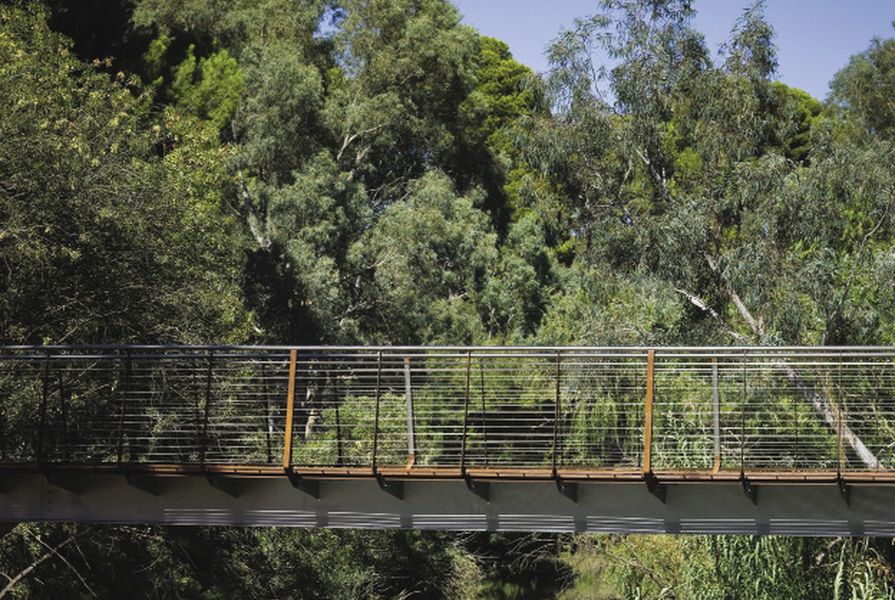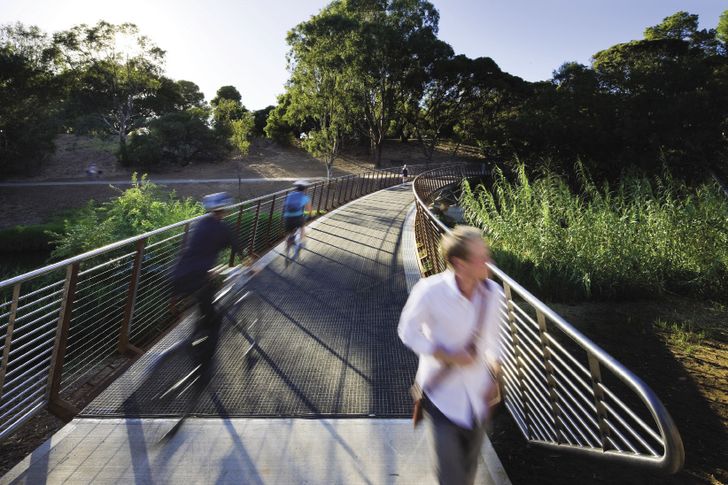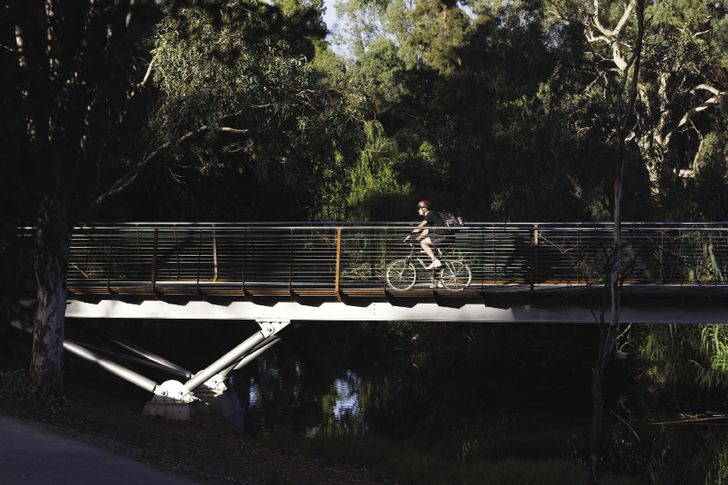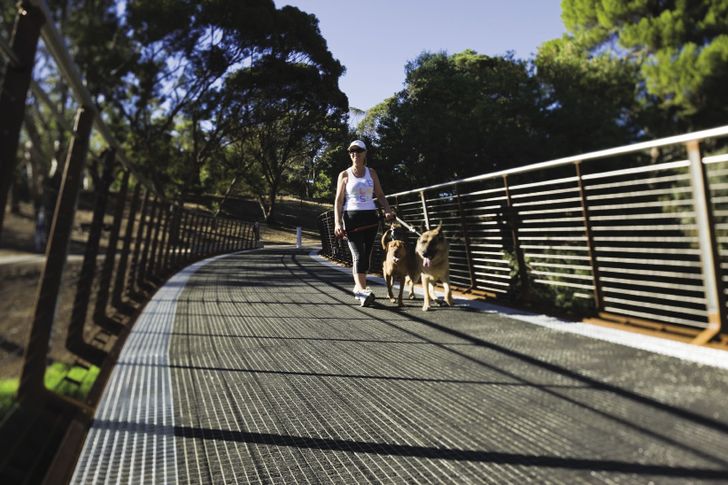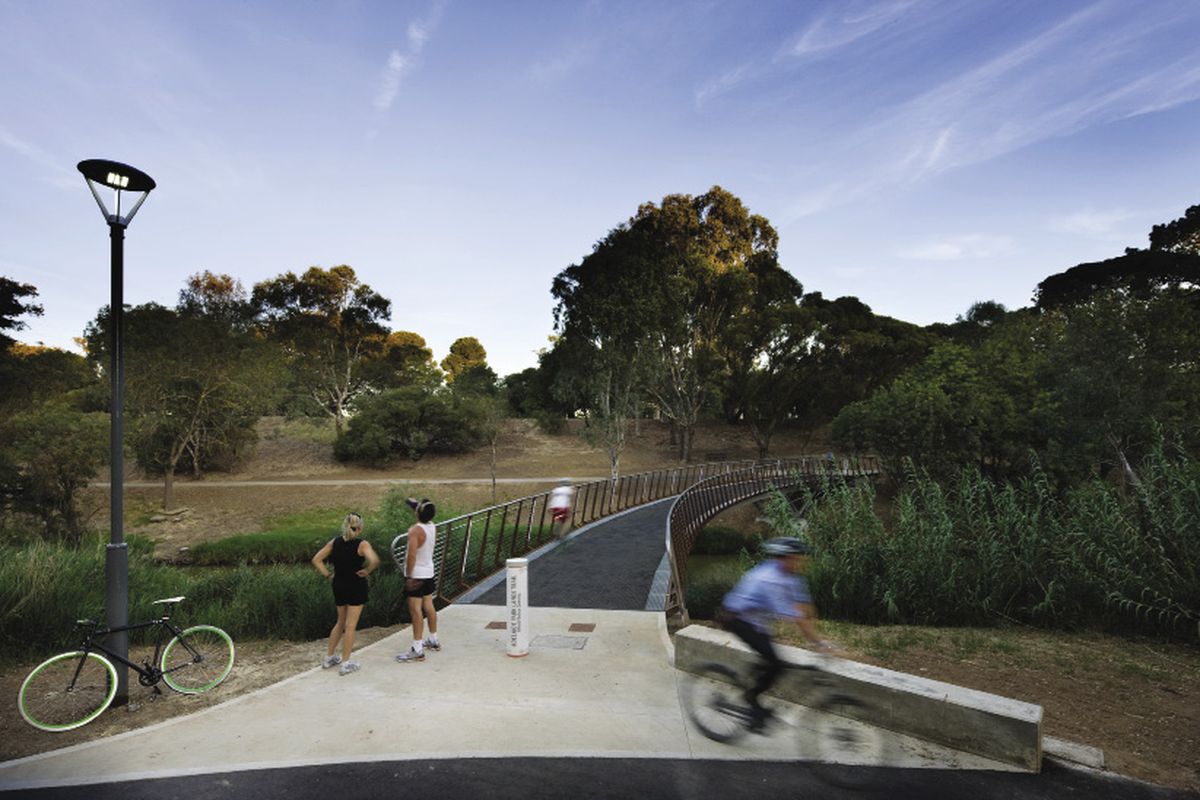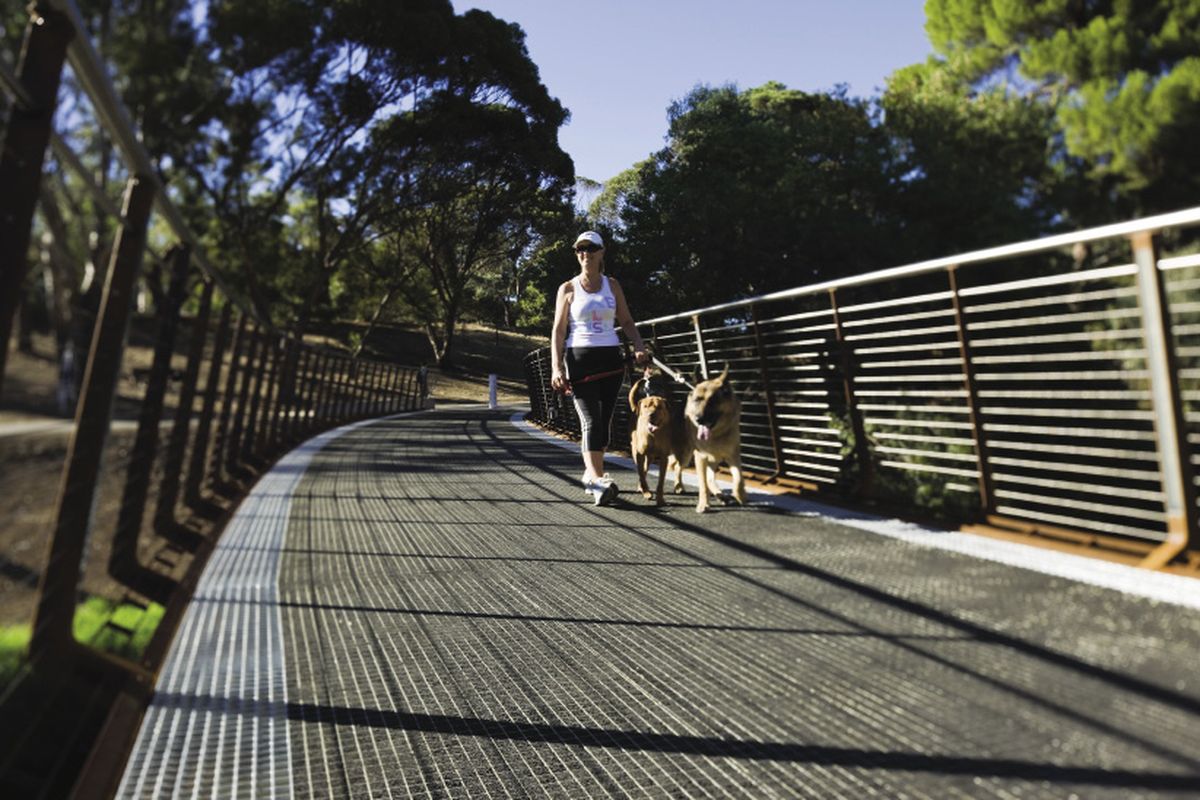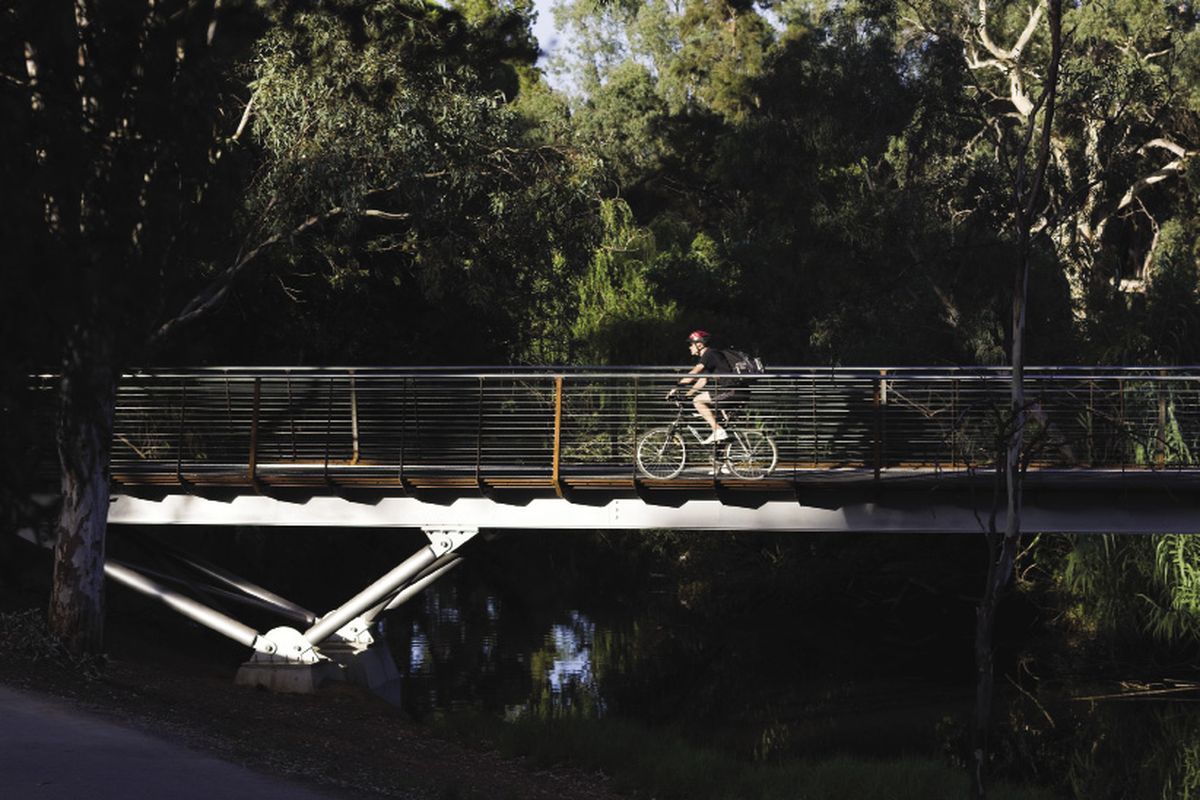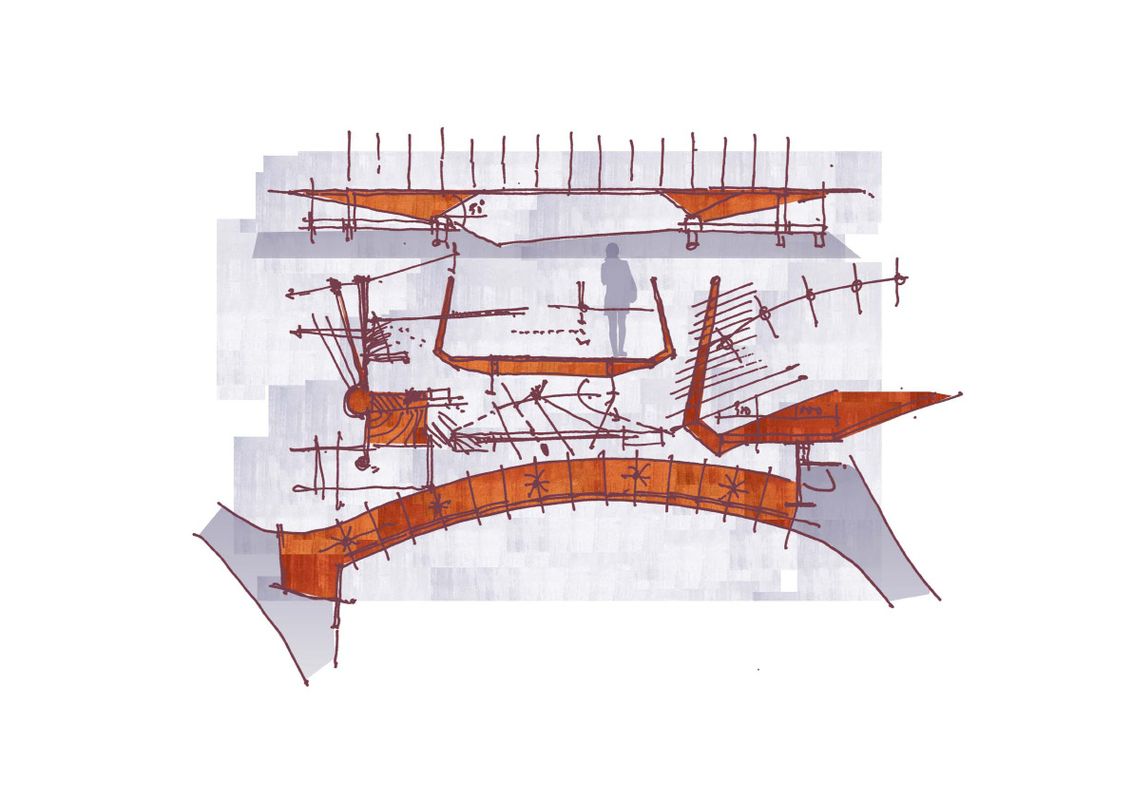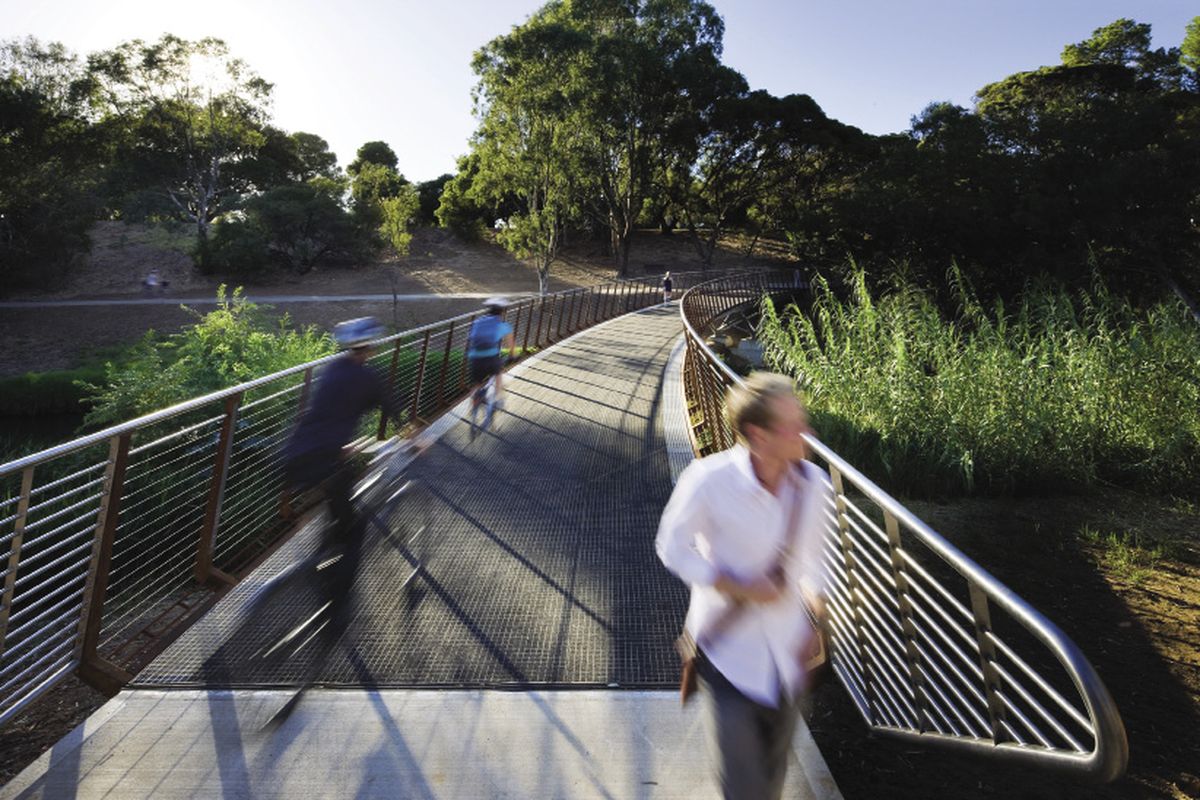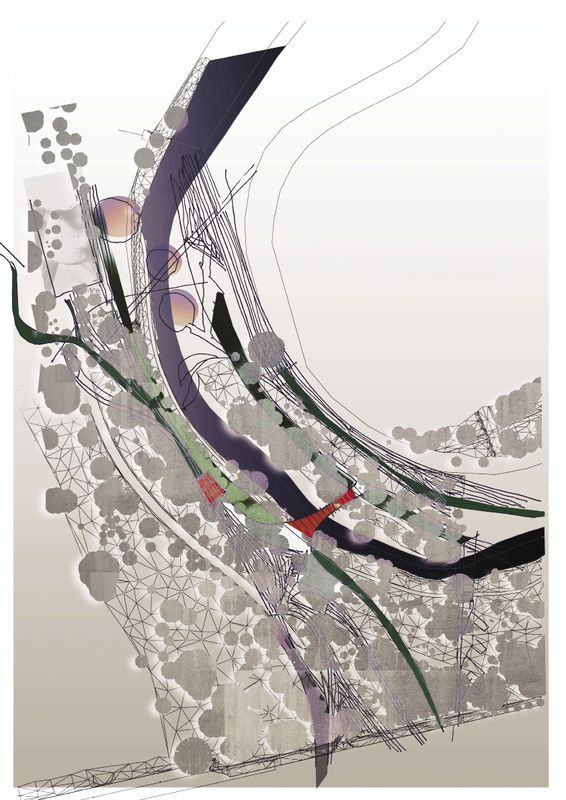As the first new pedestrian crossing built over the River Torrens in Adelaide since 1937, the new footbridge by Oxigen provides a vital connection through the bifurcated Adelaide Park Lands and forms part of the extensive network of shared-use paths constituting the Adelaide City Park Lands Trail. Located behind the Adelaide Zoo, this section of the river has long been considered unsavoury and unsafe, despite the somewhat beguiling informal quality of the meandering river, pronounced topography and mature eucalypts, which together contrast with the more manicured embankments further west. While facilitating passage between North Adelaide and the city, and to the adjacent public facilities such as the zoo, Botanic Gardens and Botanic Park, the bridge also allows brief contemplation of this undervalued but idiosyncratic landscape and increases the prominence of the adjacent River Torrens Sculpture Walk.
The bridge facilitates passage between north adelaide and the city.
Image: Sam Noonan
In discussing the project, Oxigen speak of their endeavour to respond directly to the specific conditions of the site and function in an exercise of “fitting lines to the landscape.” This has resulted in careful positioning of the bridge midway down the embankment to provide isolation from adjacent traffic and respond explicitly to desire lines and predicted patterns of use for cyclists and pedestrians. Consequently the bridge crossing occurs in close proximity to the water below. Coupled with the gently curved inflection in plan, which reflects and encourages dominant traffic flows, this proximity to the water makes apparent the site morphology and promotes a pleasant and intimate engagement with the river.
A key connector to the Adelaide city park lands trail, the bridge is part of twenty-four kilometres of shared cycle and pedestrian footpath.
Image: Sam Noonan
The direct response to site and movement is further reinforced by an equally direct formal and material response. Structure is economic but expressive; primary materials are serviceable and varied – including Corten, stainless and galvanized steel – and do not require applied finishes, with the exception of the substructure painted silver to provide a sharp contrast to the murky water below. The deck is an innovative composite system of galvanized web-forge steel mesh infilled with granolithic rubber softfall. The outer edges of the deck are left as open mesh, providing a slim and porous edge to allow drainage and views through to the water below. LED strip lighting is incorporated into the balusters in an elegant and integrated fashion.
Despite its relatively modest scale, the bridge assumes an assertive presence in the landscape and reinforces the role of well-executed urban infrastructure in the production of an engaging, relevant and desirable public realm.
The deck is made from galvanized web-forge steel mesh infilled with granolithic rubber softfall.
Image: Sam Noonan
“The bridge over the River Torrens is a key connector for the iconic Adelaide City Park Lands Trail. It provides a critical link between the northern and southern sides of the River Torrens near the Adelaide Zoo. The trail itself is a unique and important collaboration of the Adelaide City Council and state government. It provides approximately twenty-four kilometres of shared-use cycle and pedestrian footpath circumnavigating the Park Lands and providing for both commuting and recreation.
The bridge is a key component of the wider trail network. This section of the trail provides key recreational links and physical connections for city visitors to the major destinations of the zoo and the Botanic Gardens. This section of the trail and the bridge itself provides an opportunity for people to access and further explore the Adelaide Park Lands, the River Torrens Linear Park Trail and the broader regional recreational connections and open space networks of the adjoining local government areas.”
— Marty Reeve, Adelaide City Council.
Credits
- Project
- River Torrens Bridge
- Landscape architects
- Oxigen Landscape Architects
Adelaide, SA, Australia
- Project Team
- James Hayter, Simon Lee, Chris Tidswell, Travis Wright, Alex Game,
- Consultants
-
Engineer
Joe Jones
Lighting Lucid Consulting Australia, Bruce Hatwell
Structural engineering Northrop Consulting Engineers
- Site Details
-
Location
River Torrens,
Adelaide,
SA,
Australia
- Project Details
-
Status
Built
Design, documentation 5 months
Construction 3 months
Category Landscape / urban
Type Culture / arts
Source
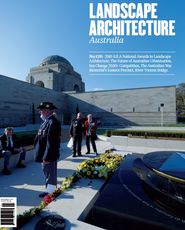
Review
Published online: 28 Apr 2016
Words:
Matt Davis
Images:
Sam Noonan
Issue
Landscape Architecture Australia, November 2010

